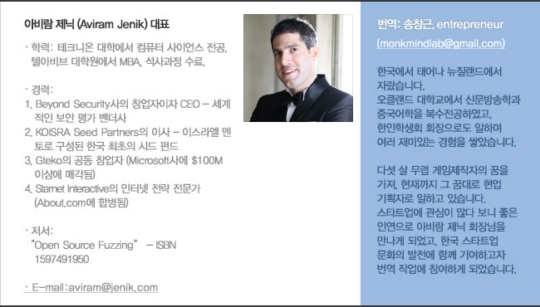컴퓨터 외관에 집착해 엔지니어들로 하여금 불가능 해보이는 일들에 대한 답을 찾도록 강요했던 완벽주의자 스티브 잡스에 대한 책을 읽어보셨을 겁니다. 결국 어떠한 타협안도 수용되지 않았고, 잡스는 그가 원하던 완벽한 형태의 제품을 들고 세상 밖으로 나왔습니다.
아마존은 제가 개인적으로 좋아하는 기업입니다. 회사 운영에 있어 무결점의 모습을 보여주기 때문이지요. 고객으로서 단 한 번이라도 아마존과 거래를 해본 사람이라면 그 거래 경험이 얼마나 완벽했는 지를 증명할 수 있을 겁니다. 이러한 사례 중에는 무언가 일이 잘못되어 고객이 항의를 하는 경우, 아마존이 이를 어떻게 대처하는 지에 대한 훌륭한 이야기들도 있습니다.
아마존은 다른 회사에게 연산력(Computing power)를 판매하는 아이디어를 개발한 회사이고, 이를 저렴한 가격으로 제공하기 시작했을 뿐만 아니라 시간이 지남에 따라 그 가격을 점점 더 내린 회사이기도 합니다. 그리고 그 이유가 다른 회사와의 경쟁 때문이 아닌, 고객의 이익 증대 뿐이였고요.
마이크로소프트의 경우 빌 게이츠의 비전과 엄청난 실행력을 통해 거대한 회사로 성장한 이야기가 기억됩니다. 1995년, 넷스케이프가 인터넷 분야의 선구자로 떠올랐을 때, 마이크로소프트는 자체 제작한 브라우저인 인터넷 익스플로러를 세상에 내놓았고, 이후 몇 년 사이에 브라우저 시장의 리더로 발전하여, 2000년에 이르러서는 90%가 넘는 점유율을 보유하게 되었습니다. 자동차나 텔레비전 시장에서 이와 같이 90%가 넘는 시장 규모를 단 하나의 회사가 보유하고 있는 경우를 상상해보실 수 있습니까?
마이크로소프트가 그들의 운영체제 시스템을 사실 표준(De-facto standard) 수준을 넘어 시장을 점하다시피한 정도로 키워낸 능력은 앞으로 올 수십 년 동안에도 경외심과 함께 공부될 것입니다. 이 회사에 대한 가장 인상적인 부분은 아마도 지속적으로 발전하려는 노력에 있을 겁니다.
이 곳에서는 매년마다 상사나 동료로부터 받은 평가가 하위 10%인 직원들을 해고하고 새로운 직원을 고용해 이를 대체합니다. 이러한 완벽을 추구하는 마이크로소프트의 모습은 절대로 끝날 것 같지 않아 보이고 이는 회사가 매해 600억 불이 넘는 돈을 벌게 해주고 있습니다.
이러한 회사들의 이야기가 있기에, 스타트업들은 주로 잡스의 완벽주의와 제프 베조스의 운영 효율성, 그리고 빌 게이츠의 시장 독점을 향한 무자비한 질주에 포커싱을 맞추곤 합니다. 허나 이러한 이야기들은 단지 미화된 동화에 불과할 뿐이죠. 마치 패션 잡지에서 찾아볼 수 있는 포토샵 처리된 모델 사진과 다를 바 없습니다. 잘못된 이야기를 전달하여, 잘못된 결정을 짓도록 만들지요.
연예인들의 무보정 사진처럼, 진짜 이야기들은 구하기가 쉽지 않습니다. 일반 대중들이 듣기에는 별로 흥미로운 주제가 아니죠. 그러나 이런 이야기들에는 배울 것이 많고 아주 중요한 내용을 가지고 있습니다.
애플 II 컴퓨터는 성공한 제품이지만, 실은 부분적으로만 그렇고 그 성공은 제품의 미학적인 부분 때문이었습니다. 1980년에 애플이 그 다음 시리즈인 애플 III를 내놓았을 때, 잡스는 한 술 더 떠 엔지니어들에게 제품에 쿨링 팬을 달지 않은 채 출시하라 강요했습니다. 쿨링팬이 제품의 비주얼을 망치고 소음을 발생시킬 것이라 생각했기 때문이죠.
그 결과 애플III는 구동한 지 얼마 지나지 않아 과열로 인해 멈춰버리는 현상을 보입니다. 그리고 그대신 1981년에 출시된 IBM의 제품이 컴퓨터 플랫폼 시장을 지배하게 되지요. 잡스의 완벽주의가 결국 또 다시 그를 망쳐 놓은 셈입니다. 애플이 처음 아이폰을 내놓았을 때, 잡스는 애플에서 만들지 않은 앱이 아이폰에서 구동 되는 것을 격렬히 반대했었습니다. 그러나 다른 임원진들은 아이폰을 대중화 시켜 돈을 벌기위해서는 개개인의 개발자들이 앱을 만들도록 허락해야 함을 알고 있었습니다. 네, 절대 오타를 적은 게 아닙니다.
스티브 잡스는 `앱스토어`라는 아이디어에 완강히 반대했었지요. 10년이 지난 후, 앱스토어는 iOS 플랫폼이 가지는 영향력의 핵심 원인이 되었을 뿐만 아니라, 애플이 얻는 수익의 큰 부분을 차지하게 되었습니다. 스티브 잡스는 애플 III와 관련된 실수로 인해 애플을 거의 파산 직전까지 끌고 왔었지요. 그리고 앱스토어를 반대하면서 회사를 거의 망하게 할 뻔했었습니다.
아마존과 마이크로소프트의 실수는 더더욱 잘 알려져 있지요. 아마존은 `아마존 파이어`라 불리는 자체 모바일폰을 출시한 후로 지금까지 그 상처를 회복하고 있는 중입니다. 마이크로소프트는 준(Zune), 윈도우미(Windows ME), 오피스 페이퍼클립(Office paperclip) 등과 같이 아주 많은 실패 경험이 있지요. 두 회사의 경우 모두, 많은 비평가들은 그들의 포악한 기업 문화를 이야기하곤 합니다. 이런 모습들은 잡지에서 볼 수 있는 예쁜 사진들의 모습이 아니죠.
모든 회사는 실수를 겪습니다. 설사 최고의 회사 일지라도요. 그러나 회사에게, 특히 스타트업이라면 가장 치명적인 실수가 있는데요, 바로 `실행하지 않는 것`이랍니다. 애플은 애플III 프로젝트에서 실수하였지만, 이후 이를 고쳐나갔습니다. 마이크로소프트도 한 때 실수로 비틀거렸지만 계속해서 일을 해나갔습니다.
아마존의 `아마존파이어`도 실패했지만 그 것이 결국 아마존의 성공을 막진 못했습니다. 정리하자면, 이 회사들은 실패로부터 오는 두려움으로 인해 새로운 것을 시도하길 주저하지 않았습니다. 회사 내부 사람에게 회사의 가장 큰 실패가 무엇이었냐고 묻는다면, 크게 성공할 수 있었으나 그렇게 되지 못한 프로젝트를 얘기해줄 것입니다. 시도하지 않는 것은 거의 항상 시도하여 성공하지 못한 것보다 훨씬 더 큰 실수입니다.
따라서 큰 회사로부터 배울 점이 있다면, 그 것은 바로 기다림보다는 시도하고 실패하는 것이 언제나 더 낫다는 점이겠습니다. 첫 번째 실수는 고쳐질 수 있습니다. 그러나 두 번째는 치명적일 것이고요.
How to do everything right
Many startups are obsessed with the idea of doing “everything right”. Reading corporate history for companies like Apple, Amazon and Microsoft just fuels this need even further.
We read about the perfectionist Steve Jobs, who wanted packaging to be as good as the product himself; how he obsessed about the physical appearance of the Apple computer and forced the engineers to find ways to implement what they thought was impossible and what he thought was necessary; no compromises were made and he came out with the perfect product.
Amazon is my personal favorite: A company that seems to have flawless operational execution. Anyone who had a single interaction with Amazon as a customer can testify to how perfect the interaction was. Those with many interactions can tell grateful stories on how well Amazon handles customers complaints when things go wrong.
This is a company who on their own invented the idea of selling computing power to companies, and not only came out with cheap initial pricing, but is reducing pricing as time goes by - not in response to competition but for the sole purpose of having customers benefit from Amazon’s own cost reduction.
Microsoft is remembered for Bill Gates’ vision and breathtaking execution for such a giant company. In 1995, when Netscape was rising to the top as the Internet pioneer, Microsoft released their own browser, Internet Explorer, and drove it to become, just a few short years later, the market share leader and up to over 90% market share in the year 2000. Can you imagine a single company controlling 90% marketshare of all cars, or of all Televisions?
Microsoft’s ability to make its operating system not just the de-facto standard, but an actual monopoly in the market will be studied in amazement for decades to come. What may be most impressive about the company is its constant efforts to improve. Every year, 10% of the employees, the ones that are ranked lowest by their bosses and team mates, are fired from the company and replaced. Microsoft’s pursuit of excellence seems to be never-ending and helps Microsoft make over $60 Billion a year.
With these examples to emulate, startups often focus on Jobs’ perfectionism, Jeff Bezos’ operational excellence and Bill Gates’ ruthless drive for market domination. But these stories are glorified fairy tales. They are the equivalent of photoshopped pictures of models in fashion magazines. They are telling the wrong stories, and drive those who believe into the wrong conclusions.
The real stories, just like untouched pictures of celebrities, are not easy to come by. They are not as exciting for the general public. But the stories they tell, are much more important to learn from.
The Apple II computer was indeed a great success, in part because of its aesthetics. In 1980 Apple announced their next computer, the Apple III, which should have taken over the computing world. But Steve Jobs took his obsessiveness one step too far: he forced the engineers to ship the Apple III without a cooling fan, because he thought it to be ugly and noisy. The result was an overheated machine that would stop working soon after you bought it.
The IBM PC started selling in 1981, and became the dominant computing platform instead. Jobs’ perfectionism almost failed him again: When Apple released its iPhone, Jobs violently refused to allow applications to run on it that were not written by Apple. Other executives understood that the way to make the iPhone popular (while making money for Apple in the process) would be to allow developers to write “apps” to the phone.
Yes, this is not a typing mistake - Steve Jobs was strongly against the idea of the “App Store”. He had to be almost forced to allow it. 10 years later the “App Store” is not only one of the reasons for IOS platform strength, it is a major part of Apple’s revenues. Steve Jobs’ brought Apple to near bankruptcy on his first mistake with the Apple III. He almost destroyed it again by preventing the “App Store”.
Mistakes by Amazon and Microsoft are much better known. Amazon is now licking its wounds from the disastrous launch of its own mobile phone “Amazon Fire”. Microsoft has a long string of failures: The Zune, Windows ME, the office paperclip, and many others. In both cases, many critics talk about vicious corporate culture. Those are not pretty magazine pictures.
Companies make mistakes, even the best of them. But here is the most fatal mistake, especially for a startup: not acting. Apple blew it with the Apple III, but fixed it later on. Microsoft stumbled, but continued course.
Amazon’s “Fire” failure does not prevent it from being successful everywhere else. In short - a fear of failure is not stopping these companies from trying new things. If you ask company insiders what were the real great failures, they will tell you about projects that could have been huge successes but did not happen. Not acting is almost always a bigger mistake than trying and not succeeding.
If there is something startups should learn from the great companies, it’s that trying and failing is always better than waiting. The first can be fixed. The second is fatal.
스타

�
관련뉴스














